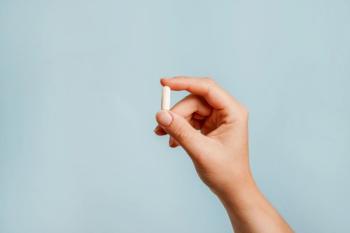
Drug discovery down, despite quicker approvals
Despite better tools, decreased time to Food & Drug Administration approval, and an unbelievable figure for 2006 projected pharmaceutical sales-$321.1 billion-the payoff for drug innovation in the United States has been lagging. Over the past 10 years, there has been an annual average of only 10 to 15 new molecular entities (NMEs) to receive a nod from the FDA through fast-track approval, and only five through the regular approval process. This was the news coming from the 2006 Annual Meeting of the American College of Clinical Pharmacy (ACCP), held in St. Louis in October.
Roger L. Williams, M.D., executive VP and CEO of U.S. Pharmacopeia (USP) Convention, said, "All the energy going into NMEs doesn't seem to have the payoff that one would expect." The fact is, at an estimated cost of $800 million to $1 billion to bring a new therapeutic to market, it is an expensive venture. "It is also a time-consuming and torturous process," said Williams of drug discovery. "Nine out of 10 medicines are dropped out of the process."
Still, according to Williams, the United States currently leads the world with nearly 3,000 new drugs in development, including 83 for HIV/AIDS, 194 for pediatrics, 122 for heart disease/stroke, 256 for infectious disease and bioterrorism threats, 103 for mental illness, and 176 for neurological diseases. Cancer is at the top of the list, with 395 drugs currently in development.
According to Williams, a lot of business is coming from India. "In the past, they just manufactured the active ingredients, but now they are making the completed dosage form."
Still, 49% of all active ingredients used to manufacture drugs in the United States come from China and India. "There is also a strong link there to counterfeiting and drug diversion. In addition, only 10% of Indian pharmaceutical companies even have high-pressure liquid chromatography [HPLC], a machine used to separate drugs and metabolites to ensure purity. So there is a need to follow up on the quality of products being imported, Williams noted. To help combat this problem, the USP now has an office in both India and Shanghai.
In a related presentation at the ACCP meeting, Thomas S. Foster, Pharm.D., FCCP, professor at the University of Kentucky, predicted that pharmacists will be focusing on pharmacogenomics and how to individually tailor drugs to patients. He envisions "singularity" between man and machine over the next 40 years, where there is no distinction between biological and mechanical. "The key elements will be genetics, nanotechnology, and robotics. They will converge in the next few years and drive us into the future," he explained.
The drug development process as we know it will morph into something completely different within the next five to 10 years, according to Foster. "The whole way we test patients will change dramatically. In the new trial designs, we will use biomarkers and genetic tests," he predicted. Also, pharmaceutical care will be "bench to bedside" and "bedside to bench"-a circular and streamlined process. "Pharmacists must be able to practice this way in order to be successful."
Newsletter
Pharmacy practice is always changing. Stay ahead of the curve with the Drug Topics newsletter and get the latest drug information, industry trends, and patient care tips.















































































































